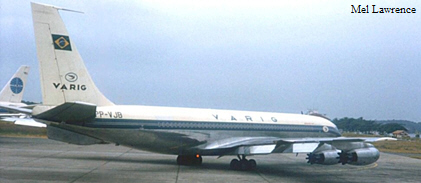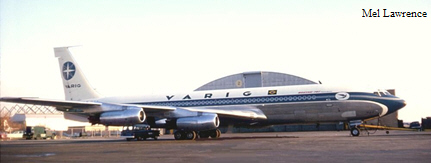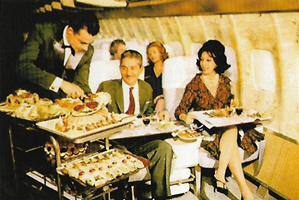|
AIRCRAFT |
|||||
|
Continuing its pioneering
initiative in jet age, in 1960 VARIG incorporates the fastest
aircraft of all, the Boeing 707. On June 22, 1960 the first Boeing
707-441, registered as PP-VJA, arrived at Galeão airport, already
bringing paying passengers from New York. VARIG changed on purpose
sequence files, using the "J" for "jet". The number "41" at the end
of the model number indicates that the aircraft was produced by
VARIG.
The Boeing 707 Series 400 (PP-VJA, PP-VJB and PP-VJJ) were equipped
with Rolls Royce Conway MK508 engines, more economical than Pratt &
Whitney turbojet and also increasing B707’s range. This allowed
to fly between Rio de Janeiro and New York nonstop for the first
time in history. The flight lasted now about 9 hours only. To ensure
nonstop flight, VARIG's B707-400 operated at the maximum levels,
requiring all engines power and almost the entire length of Galeão
International Airport runway.
After the arrival of the second unit, PP-VJB, VARIG offer three
weekly nonstop flights between Rio and New York on July 20, 1960. At
that time Caravelle also flew to New York twice a week with a stop
in Bethlehem, Port of Spain and Nassau and Super Constellation twice
a week with a stop in Port of Spain or in Bethlehem and Trujillo.
In the 60s Galeão’s runway has undergone an expansion, then B707
temporarily used Brasília airport to flight to New York.
In November 1961, Boeing 707-441 also started to operate in Rio de
Janeiro - Los Angeles route, with stops in Lima, Bogota and Mexico
City.
In the 70’s Boeing 707 began to be progressively replaced by
wide-bodies. PP-VJB
crashed near Lima in 1962 and PP-VJA and PP-VJJ were sold in 1979.
|










